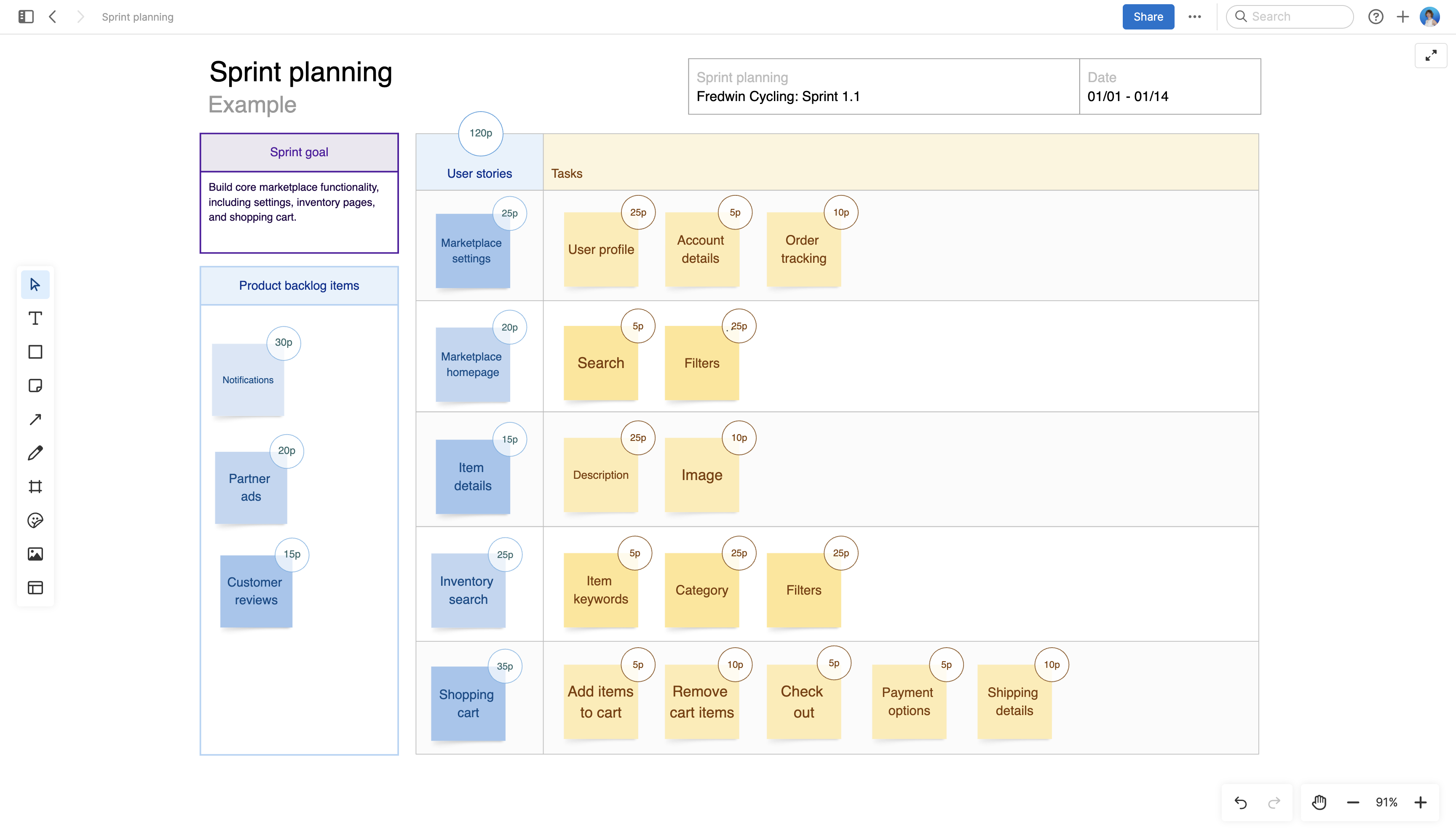What is a sprint?
Last updated: February 2024
Sprints set the rhythm of scrum. A sprint is a fixed-length iteration during which the scrum team completes a set amount of work. Sprints encourage predictability and rapid learning. Immediately after one ends, a new sprint begins. And the cycle continues — a consistent drumbeat of development.
What is scrum?
Scrum is one of the most popular agile software development methodologies. It offers a defined process framework for planning and delivering usable software. But ubiquity brings dilution.
Many engineering teams who do not follow the full scrum framework will break development work into increments they call sprints. Are they agile? Or some sort of scrum hybrid? And does it really matter?
To answer that last question: yes and no. If you are a scrum devotee? The rules matter. Terminology is part of adherence to a particular framework. In large organizations in particular, consistent planning processes are essential for coordinated delivery across many development teams. But what matters most is that you are delivering business and customer value at a consistent pace, incorporating user feedback and collective learning as you go. The wrapper is not as important as what is inside.
Scrum is popular for a reason. For many organizations, it works. So sprint forward toward your goals — in the way that best suits your team.
What happens during a sprint?
Everything happens during a sprint. You can think of a sprint as a discrete project within the broader effort of developing a product. All of the scrum events — planning, daily scrums, review, and retrospectives — occur during the time frame set by the scrum team.
The rules of a sprint
There are specific rules within a sprint, as defined in the scrum guide (which is updated annually). A sprint may be cancelled if the product goal becomes obsolete — but only the product owner has the authority to do so.
Current rules related to an in-progress sprint include:
No changes can be made that would endanger the sprint goal
Quality does not decrease
The product backlog is refined as needed
Scope may be clarified and renegotiated with the product owners as more is learned
The length of a sprint
The aim of a sprint is to make progress against the product goal. So the scrum team determines and agrees to a consistent duration for completing work. Most sprints range from two to four weeks — but should not be longer than one month. If the time box bloats past a month or so, you can end up with too much complexity and associated risk. Work becomes unwieldy. And the scrum team loses out on the opportunity to review and adapt. Rapid iteration with built-in learning cycles is the benefit of compressed sprint time frames.
What is sprint planning?
Sprint planning is collaborative. The intent is quite simple. You want to choose what will be prioritized and how that work will be done. During a sprint planning session the product owner, scrum master, and development team work through the following questions together:
Why is this sprint important?
What can be done during this sprint?
How will the chosen work get done?
The product owner shares the goal that needs to be achieved during the sprint and selects items from the product backlog that support the goal. Features chosen must align with the overall product vision and product roadmap. The sprint goal should be clearly understood by everyone on the scrum team, so that success can be objectively measured.
Once the backlog items for the sprint are chosen, the team creates a plan for how that work will be done. This “plan” is called the sprint backlog. It is prioritized and then managed by the team as items move through the workflow.
According to the scrum framework, a planning event should reflect the duration of the sprint. There is a limit of eight hours in total for a four-week sprint. Shorter sprints will have shorter planning events.
Many teams use sprint planning templates to visualize and organize this work. A template also helps to prompt the planning discussion — so you can get the whole team invested and aligned on what comes next. To get started, you can try this template in Aha! software.
Try this sprint planning template on a whiteboard — start a free trial.
